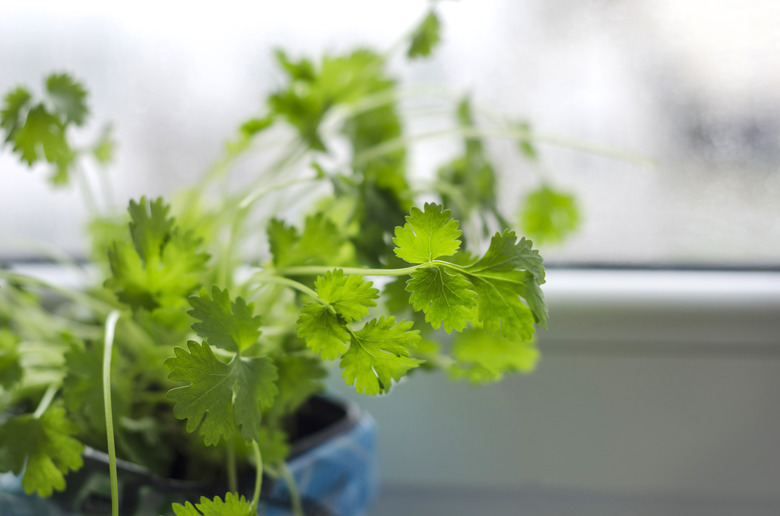How To Regrow Cilantro
We may receive a commission on purchases made from links.
You may know cilantro (Coriandrum sativum) primarily as a "love it or hate it" ingredient in Mexican food, but it's also the source of the coriander seed and ground coriander you'll find in the spice section at your local store. Aside from their culinary uses (flavor-wise, coriander is the culinary "soulmate" to cumin), those same seeds are the most reliable way to provide yourself with a supply of fresh cilantro in your garden. If you should run out of cilantro seeds for planting, you can regrow your existing plants — and extend your season — after your initial harvest.
Cilantro Grows and Matures Quickly
Cilantro Grows and Matures Quickly
Some plants are well-suited to gardeners with short attention spans, and cilantro is definitely one of those. From the moment you direct-seed it into your garden, you can expect to start harvesting leaves (cilantro) in about three or four weeks, and the seed (coriander) in about 45 days. That sounds great, but it's also why cilantro is so frustrating for many gardeners: It starts going to seed almost as soon as it's ready to harvest, and once it does, its flavor as a fresh herb quickly deteriorates.
The most common strategy for prolonging your season is simply to plant at two-week intervals, which means you should have new plants ready to harvest right around the time the previous planting goes to seed. Depending how much you grow, it's entirely possible to run out of seed before your gardening season is over (and no, you can't replant the fresh seed right away, as they need some downtime). If you don't want to buy a whole new pack of seeds for the remaining part of your growing season, regrowing your existing plants is a good option.
Cutting Down Cilantro
Cutting Down Cilantro
Re-growing your existing cilantro plants isn't a complicated project. Harvest your fresh cilantro once the plants are at least 6 to 7 inches tall — in cool weather you can let them reach twice that height — but before they begin to bolt, that is, go to seed. At that stage, they'll send up a thicker stem with feathery, fern-like foliage instead of the usual flat, parsley-esque leaves, so if even one plant does that, harvest all of the others that were seeded at the same time (skip the one that has already bolted).
Instead of pulling the plants out by their taproot, though, cut them cleanly at a height of about one inch from the ground with a pair of sharp, clean scissors, garden shears, or a suitable knife. Over the following few weeks, the plant will regenerate, and send out a new batch of stems and leaves. You won't get as big a harvest the second time, but even a moderate second harvest is better than no harvest at all.
Other Methods to Regrow Cilantro
Other Methods to Regrow Cilantro
Aside from regrowing the main stem of an existing plant in its bed, you have a couple of other options for regrowing cilantro. Taking healthy cuttings from a vigorous plant is one. Snip off a stem that's at least 3 to 4 inches long, strip away the bottom pair of leaves, dip the cut end into rooting hormone, and carefully place it in moist, well-drained potting soil. The tender cuttings will need shelter while they take root and get established, so — while you could theoretically do this outdoors in a cold frame or cloche — your odds of success are much better with indoor growing.
A final option (for gardeners and nongardeners alike) is to regrow cilantro you've bought from the supermarket. If you've purchased a bundle without roots, pick out a few of the sturdiest stems and treat them like any other cuttings. If you have cilantro with roots on, you can cut it down to 1 inch above root level just as you would in the garden. Then transplant it into a small pot with moist, well-drained potting soil.
Tip
Cilantro has a taproot and doesn't like being transplanted, so handle it carefully. First, hold the stem against your pot to see how deep the root will go. Holding the pot horizontally, half-fill it with soil and compress it gently. Lay the cilantro root horizontally on top of this soil, taking care not to bend the taproot, and positioning it so that the top of your pot is at the point where the root meets the stem. Finish planting by adding enough soil to fill the pot, tipping it up to its final (vertical) position once there's enough soil to hold the root in place.
